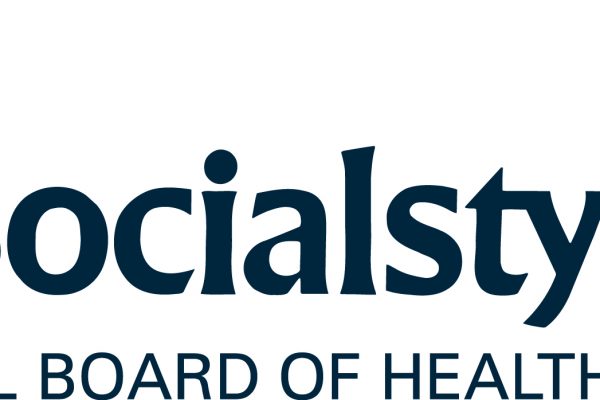Gender Exploratory Therapy Association Releases First Clinical Guide
Sweden, Finland and now the UK have grappled with the difficult question of how best to provide healthcare services to gender-questioning children and young people. All three of these national healthcare systems have decided to prioritize psychotherapy services for youth, standardize the assessment model used to determine whether children are appropriate candidates for invasive and experimental medical interventions and monitor the long-term outcomes to ensure evidence-based care and the ongoing safety of the young people accessing medical care under the program. These changes were done after conducting independent reviews of the care model and evidence.
In support of the emerging model of psychotherapy as the first line of treatment and assessment elsewhere in the Western world, we welcome the release of GETA’s first guide for clinicians which can be found at the GETA website here or downloaded below:
We hope that this guidance will form a baseline for evidence-based therapy practice for youth seeking serious and life-changing medical interventions due to gender diversity and gender non-conformity in Canada as well.
However, there are a number of obstacles preventing the adoption of this framework in Canada that puts children and young people at risk of unnecessary and harmful medical treatments. The lack of safeguarding, standardized assessments and psychotherapy services available to gender-questioning youth in Canada is a serious concern.
Affirmation and medical transition have become the de-facto model of care in Canada
Currently, in Canada most clinicians provide treatment according to the affirmative-care model, which leads patients into a medical pathway. All the major Colleges and Associations have adopted this lens even while experienced physicians have started to sound the alarm that “affirmation” is being mis-interpreted.
The current cultural climate results in an environment where there is significant social capital to be gained to “affirm” young patients’ gender identification and offer these children and young people unfettered access to invasive medical interventions. 62% of Canadian trans-identified children were offered puberty blockers or cross-sex hormones at their first visit to a gender clinic based on a study of trans-identified youth referred for gender services at most of Canada’s major children’s hospitals.
Clinicians who advocate for a cautious or thoughtful approach and try to slow their young patients down or question why they feel they need invasive medical interventions are easily bypassed.
Most Canadian Colleges and institutions have been captured by this requirement for “affirmation” and transition. For example, the Canadian Mental Health Association suggests that invasive medical procedures are the “best way to treat the distress” of gender diverse youth:
The new Gender Exploration Therapy guidance, however, suggests that people struggling with distress related to their gender deserve thoughtful care to help them understand themselves and the factors contributing to the distress they’re experiencing. This type of care is virtually non-existent in Canada. The only option available to children and young people in gender-related distress is medical transition.
Identity Formation in Childhood and Adolescence is not fixed
The major problem with “affirmation” and easy access to medical transition as a standardized model of care is that identity formation in young people is an ongoing process. A developmental lens is therefore required to ensure that appropriate and individualized care pathways are created for young people who are experiencing distress related to their gender and may also have other co-occurring issues, including mental health, neurodevelopmental and difficulty with socializing or traumatic events. Gender exploratory therapy allows for the exploration of a multi-faceted individual and does not favour any particular outcome. Gender Exploratory therapists view an individual’s self-declared gender identity like other elements of identity formation: as dynamic, potentially changing over one’s lifespan, and as particularly unstable during adolescence and young adulthood.
In contrast to the affirmation model, which simply accepts what a child or young person states regarding gender identity at face value, gender exploratory (GE) therapy builds upon the established practice of psychodynamic psychotherapy, creating a neutral space where patient and therapist together may explore issues of identity.
In contrast to conversion therapy, which begins with a stated goal, GE therapy promotes open-minded self-exploration. To conflate GE therapy with conversion therapy is simply wrong.
The Need for Ethical Therapy and an Assessment Model that Prioritizes Long-Term Outcomes
All ethical, competent, and compassionate psychotherapists affirm their patient’s experience. What ethical clinicians do not do is take all patient claims at face value or as necessary and sufficient grounds for medical and surgical interventions.
Unfortunately, gender affirmation care is a model of care which is increasingly being interpreted as the requirement to take patient declarations around their gender identity at face value and allow the patient to direct their own care goals; even when the patient is a child or young person. It’s becoming the norm in Canada that there is no assessment or exploration happening by qualified clinicians prior to initiation of medical interventions. For example, the TransYouthCan team has documented that 62% of children received puberty blockers or cross sex hormones at their first appointment.
Teachers and school guidance counsellors are able to provide referrals to Canadian gender services, bypassing parents and family physicians. For example at the Children’s Hospital of Eastern Ontario in Ottawa:
When CHEO and other children’s hospitals are approached by the media to discuss medical transitioning of minors, they carefully select patients that support the narrative of classic early-onset gender dysphoria, patients who appear to benefit from medical transition and where significant public support and empathy can be achieved. These patients are initially too young to require medical transition because they present pre-puberty, so the hospitals can promote to the public that “comprehensive assessments” are done, without acknowledging that the nature of assessments has changed drastically in the past 10 years, that the typical patient profile is no longer pre-puberty like the candidates they promote for the media, and that many providers and individual clinicians apply different approaches to these assessments.
In the increasingly rare cases when psychosocial assessments are conducted, the affirmative approach presumes that gender identity is a stable and innate trait and therefore should not be questioned. This results in an assessment model that cannot examine the root cause of the gender-related distress (gender dysphoria).
The way Gender Exploratory therapy works is from the presumption that we can’t really know what a gender identity is (after all, it’s even defined as each individual’s feeling of being a man, woman or neither) and therefore we need to help our client understand and choose how to manage their distress. Under this framework, transition is something that people choose to do ideally with extensive psychological support. There is a process of exploring the gender-related distress and if they decide to transition eventually, they are better prepared to manage that complicated journey, which it will inevitably be.
Implications for Canadian Children
The numbers of children and adolescents being referred for gender transition services has skyrocketed in recent years. This change is not understood, and claims that increased “awareness” is driving the explosion in numbers of young people does not stand up to close examination because the exponential increases are mostly being seen in adolescent females and not across other age groups. This also represents a change in the patient cohort seeking gender transition. This patient cohort is very different from the cohort of early- onset gender dysphoria seen in natal males for which the Dutch protocol of puberty blocker and medical gender transition treatments was developed.
There is ample evidence that a very large percentage of children (61% – 88%) who struggle with gender-related distress or who demonstrate strong cross-sex identification will eventually desist and become comfortable with their bodies if they are able to go through puberty. (Cantor 2022 Expert Report for Texas Court) Many will realize that they are same-sex attracted. Further, there is no reliable way of predicting when cross-gender identity will desist or persist: Cantor, J. (2016, November 1). Do trans- kids stay trans- when they grow up? Sexology Today.
This evidence supports the previous “watchful waiting” approach where 66-81% of children naturally overcame their gender distress after puberty and did not require medical transition. Canadian clinical psychologist and sex researcher, James Cantor, is an expert witness on this evidence after he painstakingly fact-checked the AAP’s gender-affirming care policy. Cantor’s testimony for a recent Texas court proceeding summarizes these findings. He also provided expert testimony on other professional association guidelines, including WPATH (the organization that Canadian provinces rely on to determine a standard of care – currently coined “affirmation”). Cantor’s expert conclusion: “There do not exist any research studies supporting or justifying the lowering of standards from the Dutch Protocol to the Endocrine Society/WPATH levels.”
He has publicly stated his disappointment in WPATH’s latest version of guidelines and recently described affirmation care as “the customer is always right”.
Conclusion
Three major national healthcare services have reviewed the evidence behind unquestioned affirmation and medical interventions for children and minors and concluded that the evidence in support of that protocol (now the norm in Canada) is unacceptably low quality and that safeguarding measures must be implemented to protect children from harm.
Gender exploratory therapy and standardized assessments are the most appropriate first-line of treatment in order to protect vulnerable children from irreversible medical harm. We urge our provincial Ministries of Health to examine the conclusions drawn by national health reviews into gender care in Sweden, Finland, and the UK.
Medical care delivered under a universal healthcare system must be able to stand up to scrutiny, and the reliance on WPATH or “informed consent” as a healthcare policy is being proven to be unsafe and not a viable option in other western countries. Why are Canadian children being subjected to an uncontrolled medical experiment when other progressive countries with universal healthcare systems are offering psychotherapy and standardized assessments as the first line of treatment?
Canadian provinces must undertake policy reviews that accurately reflect the available data and the precautionary principle of first do no harm when treating gender non-conforming children and young people with invasive medical interventions such as puberty blockers, cross-sex hormones and irreversible surgeries. We expect gender exploration therapy to emerge as a very successful first line of support for gender non-conforming youth who are considering invasive medical procedures in the form of body modification treatments.




One thought on “Gender Exploratory Therapy & Barriers to Care in Canada”